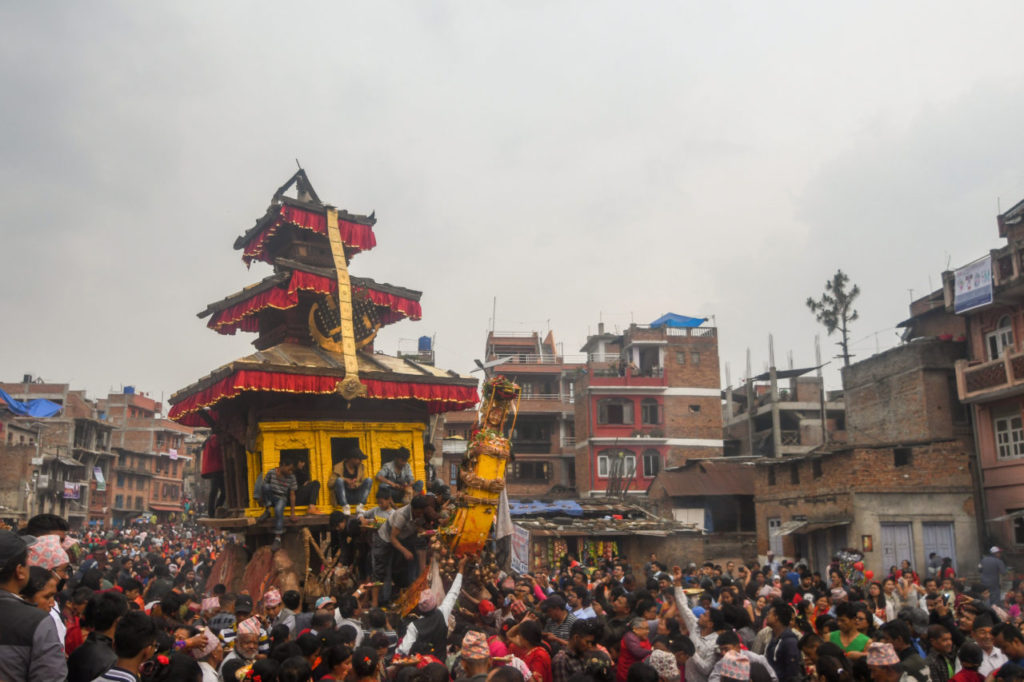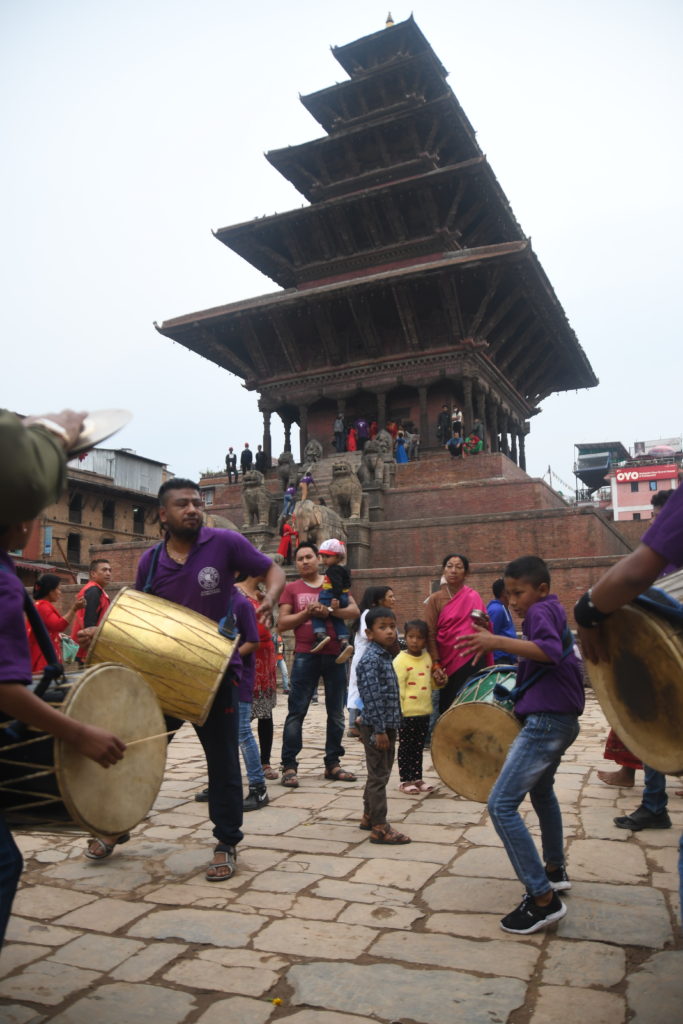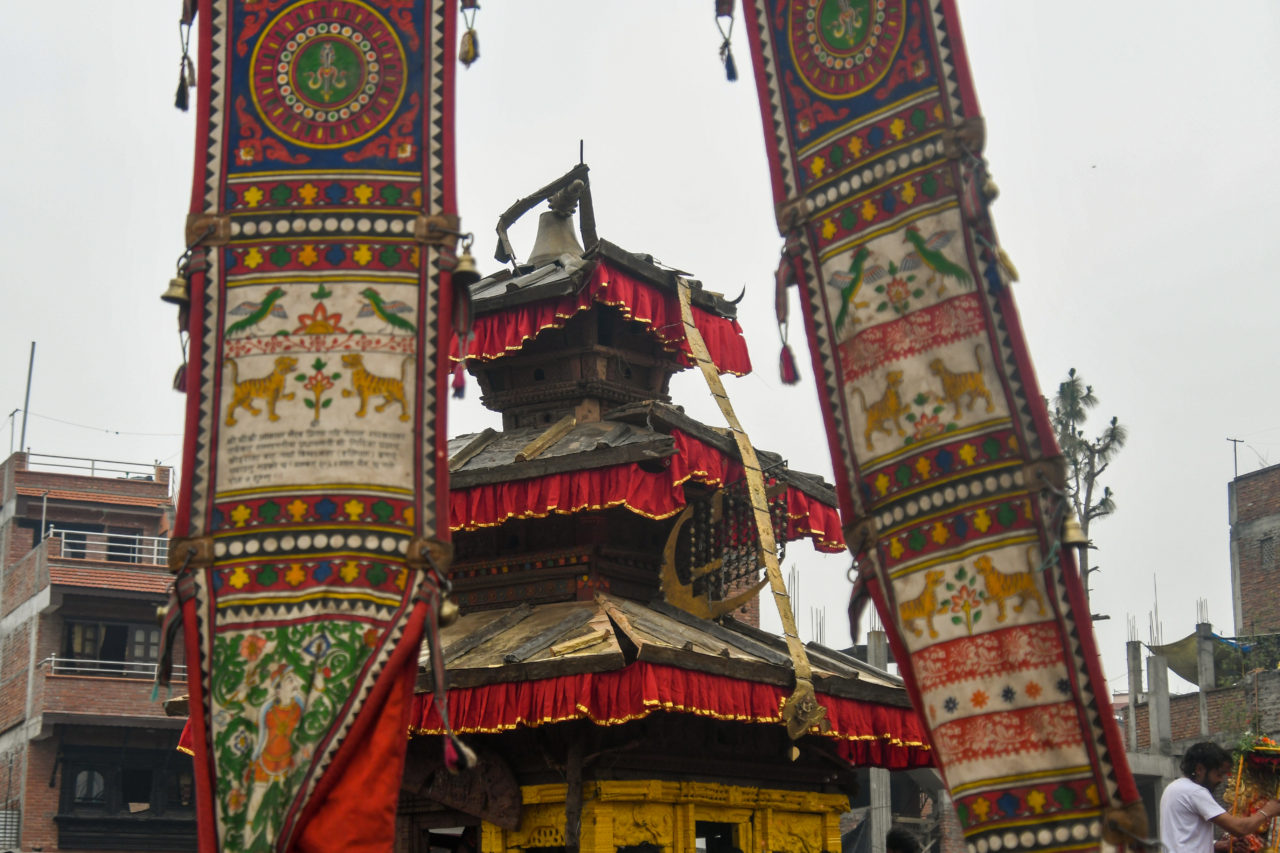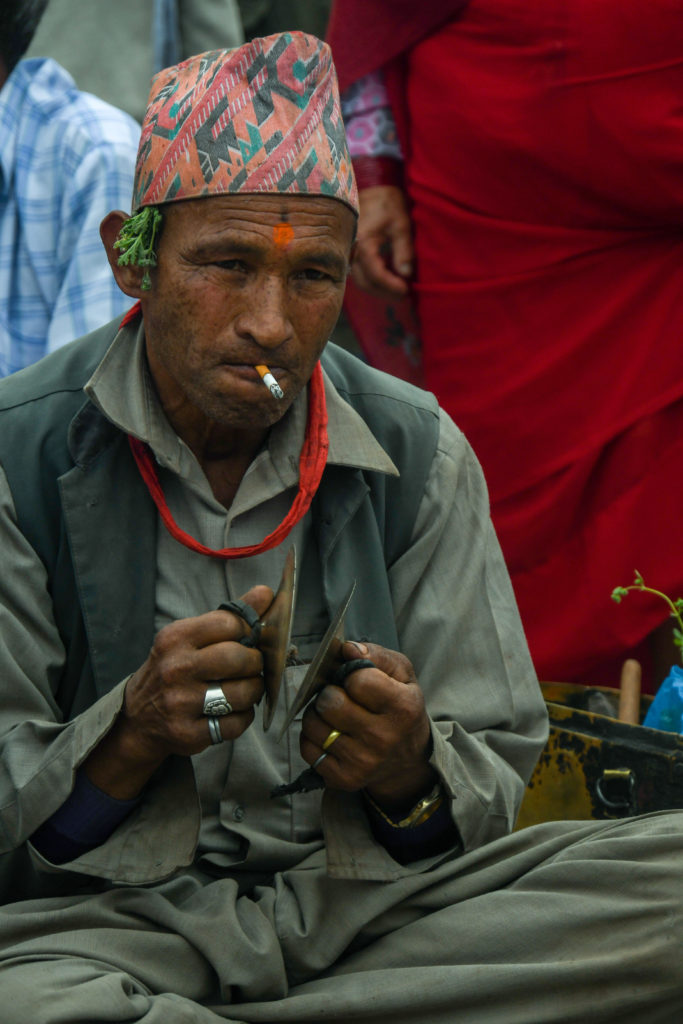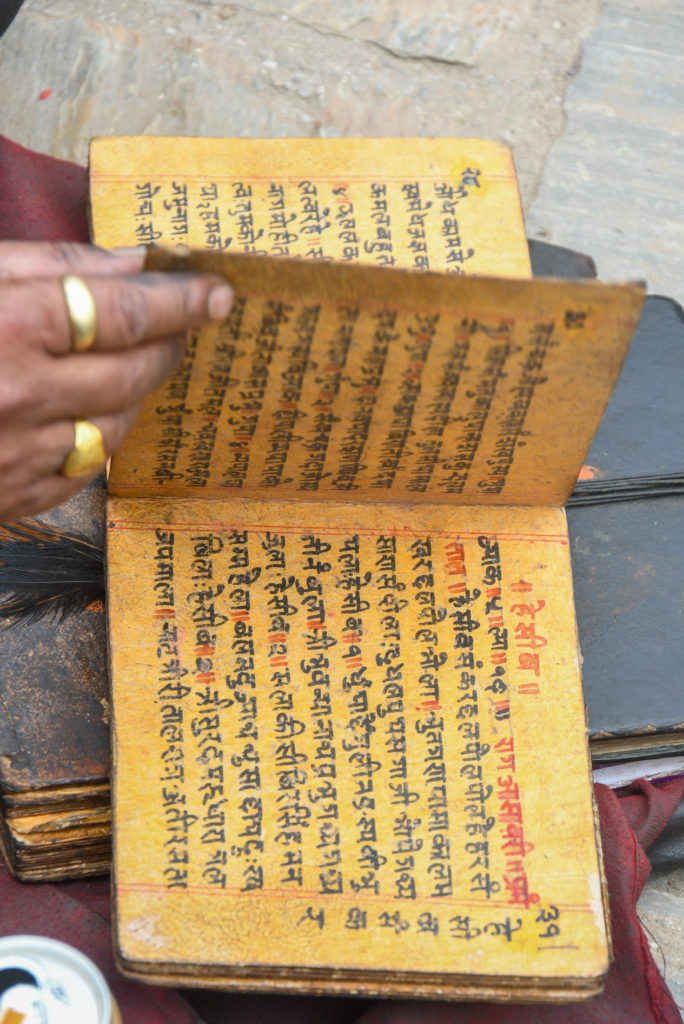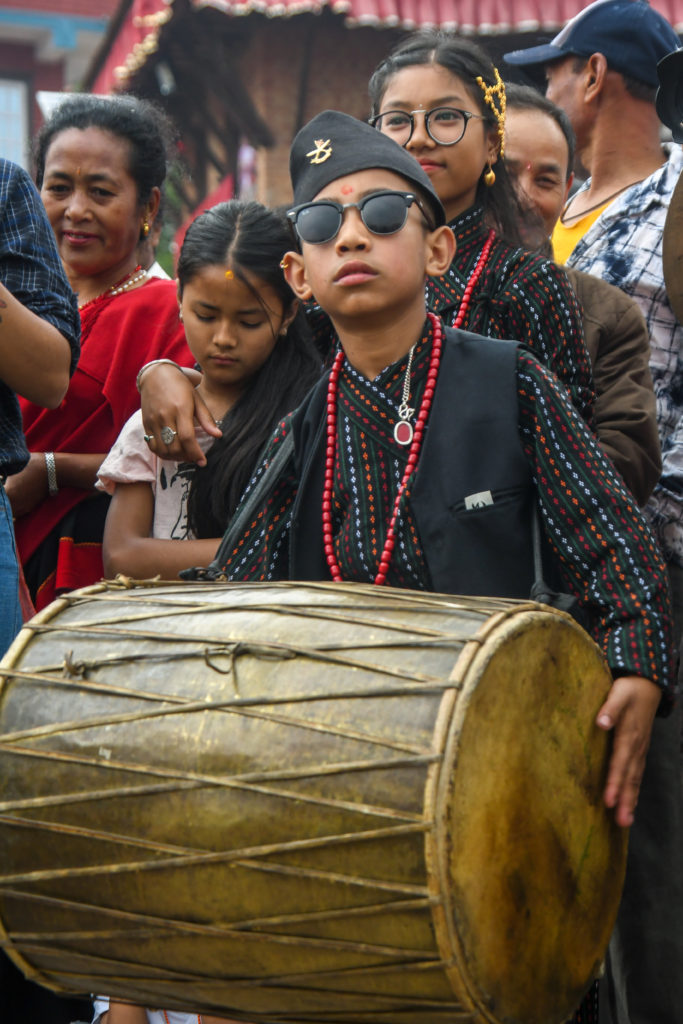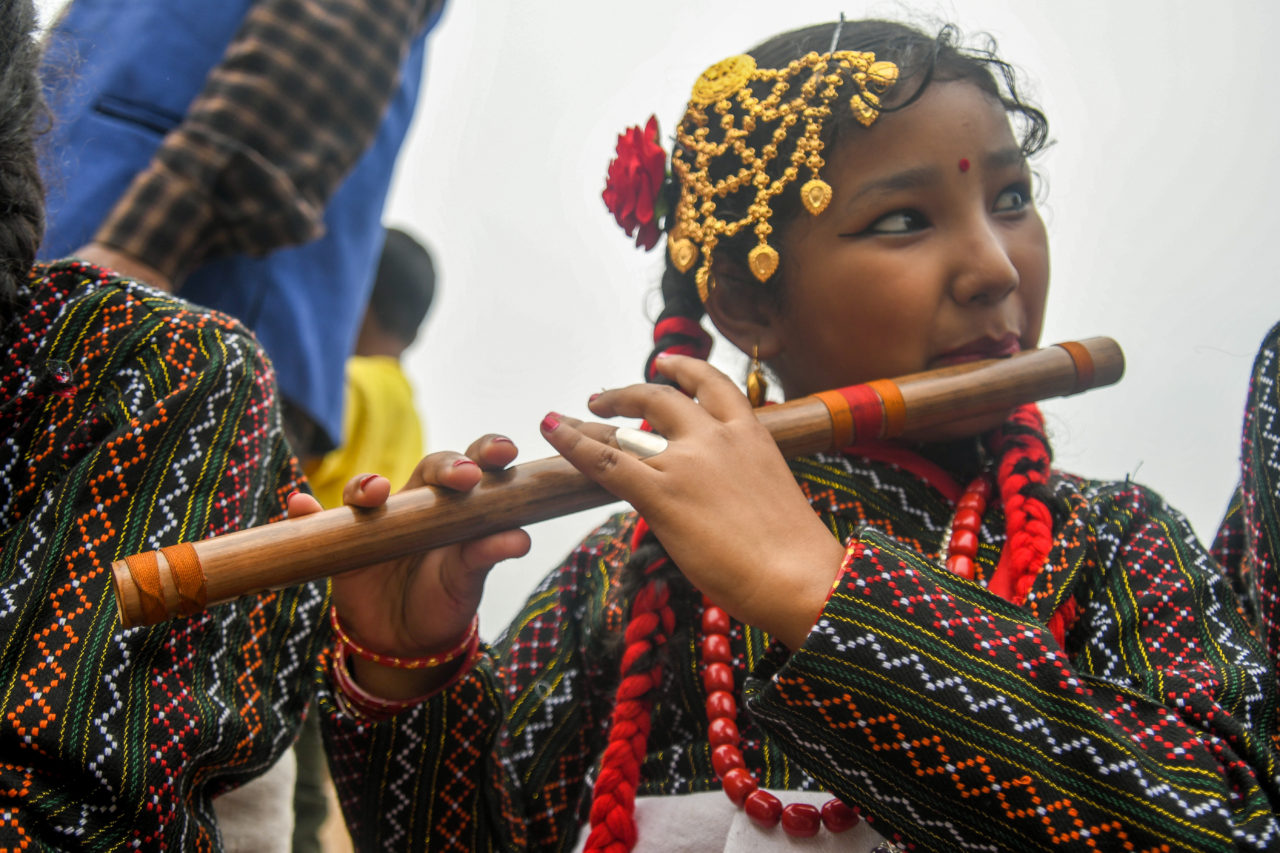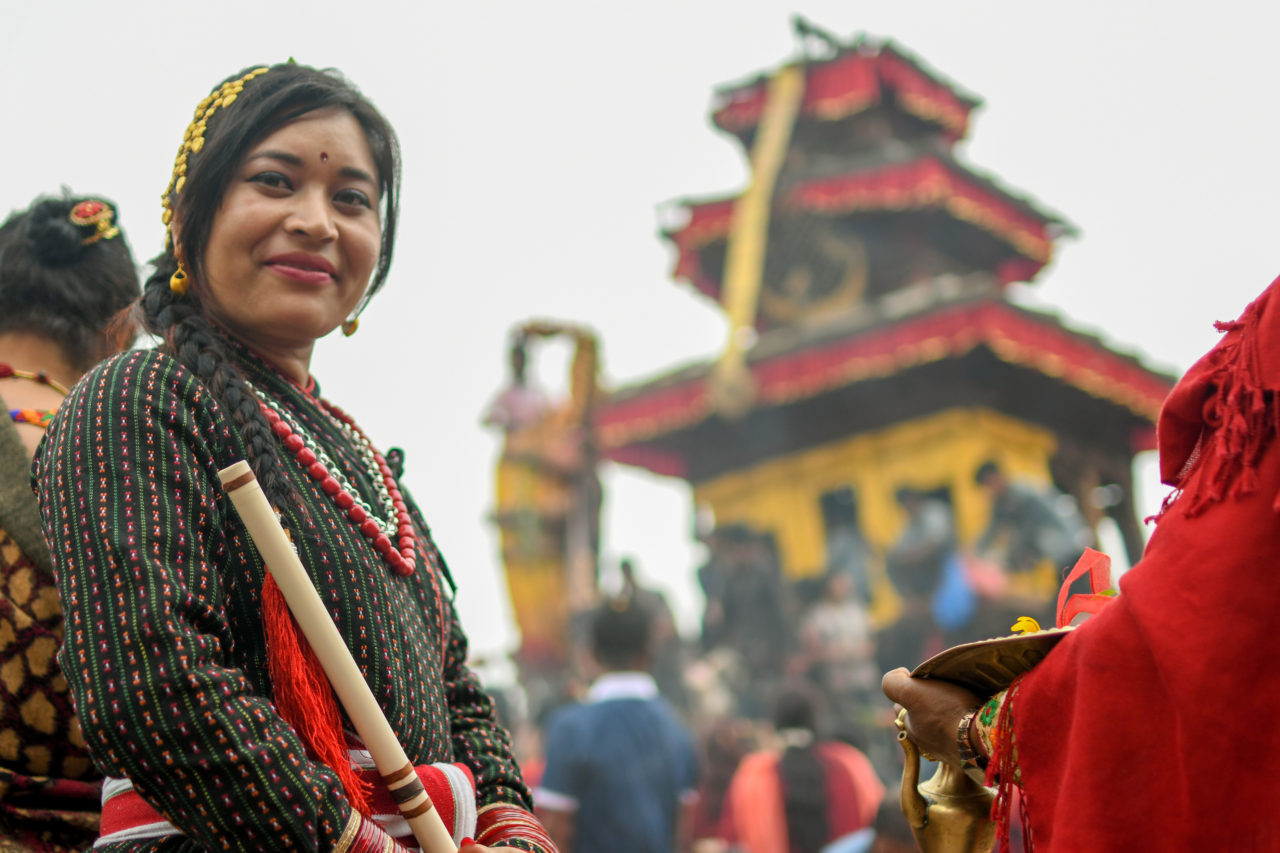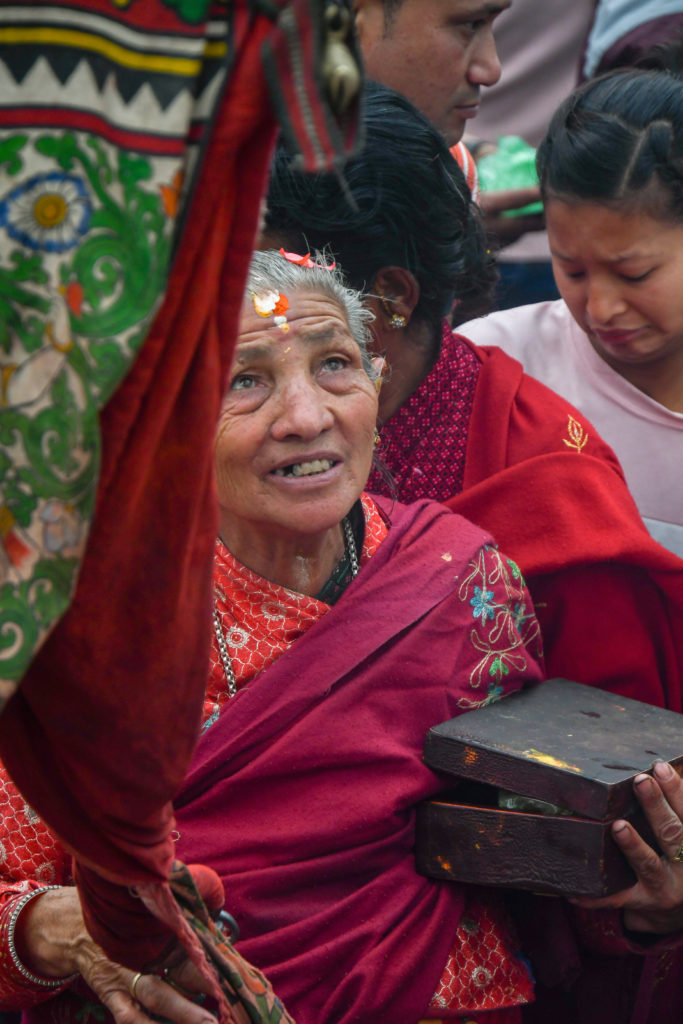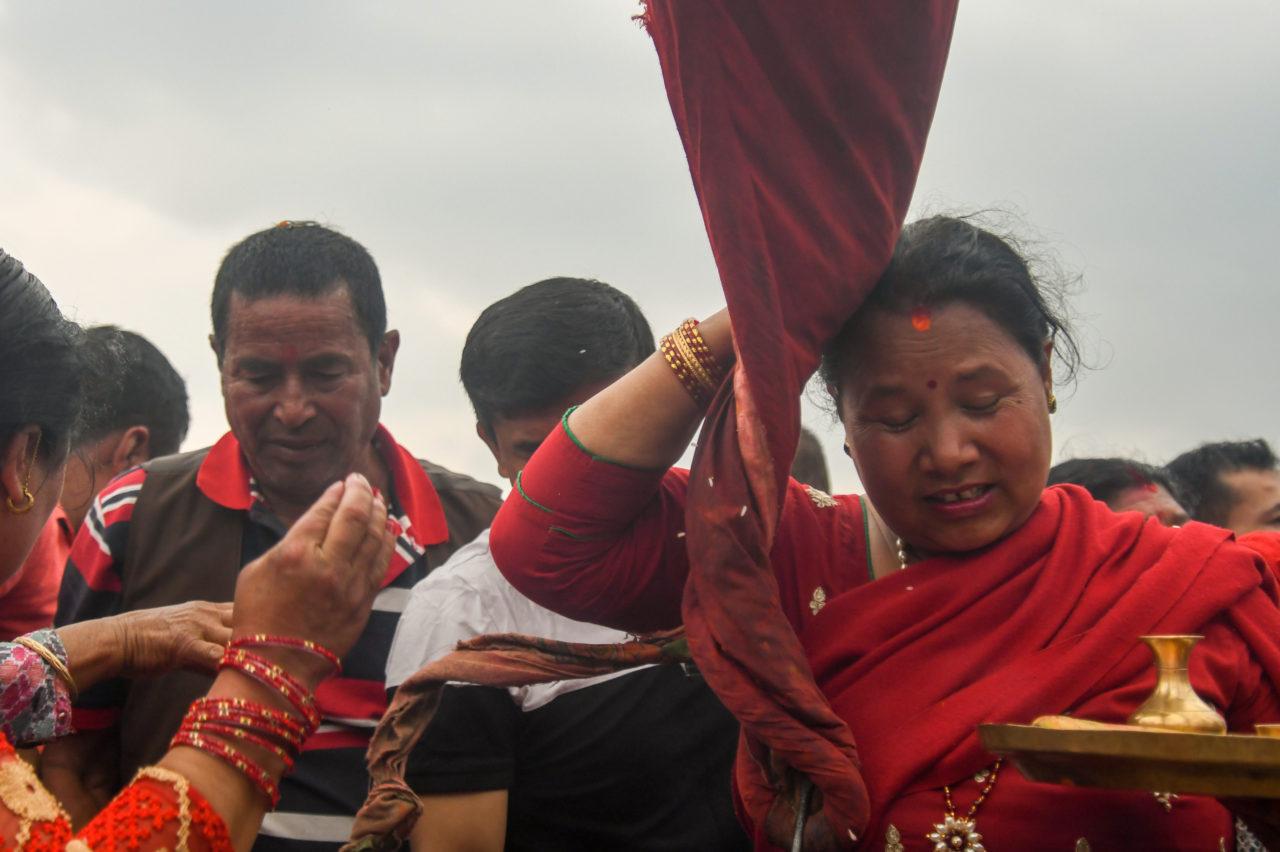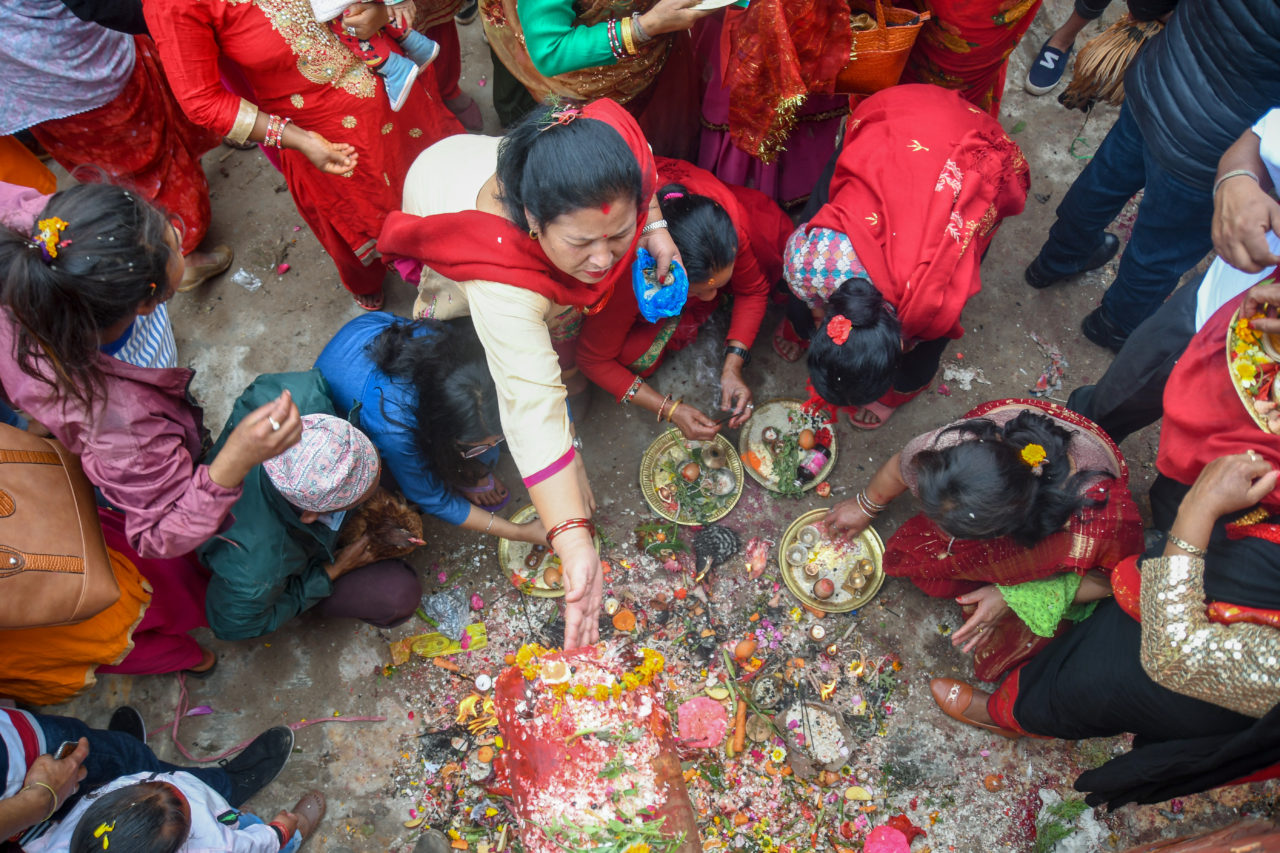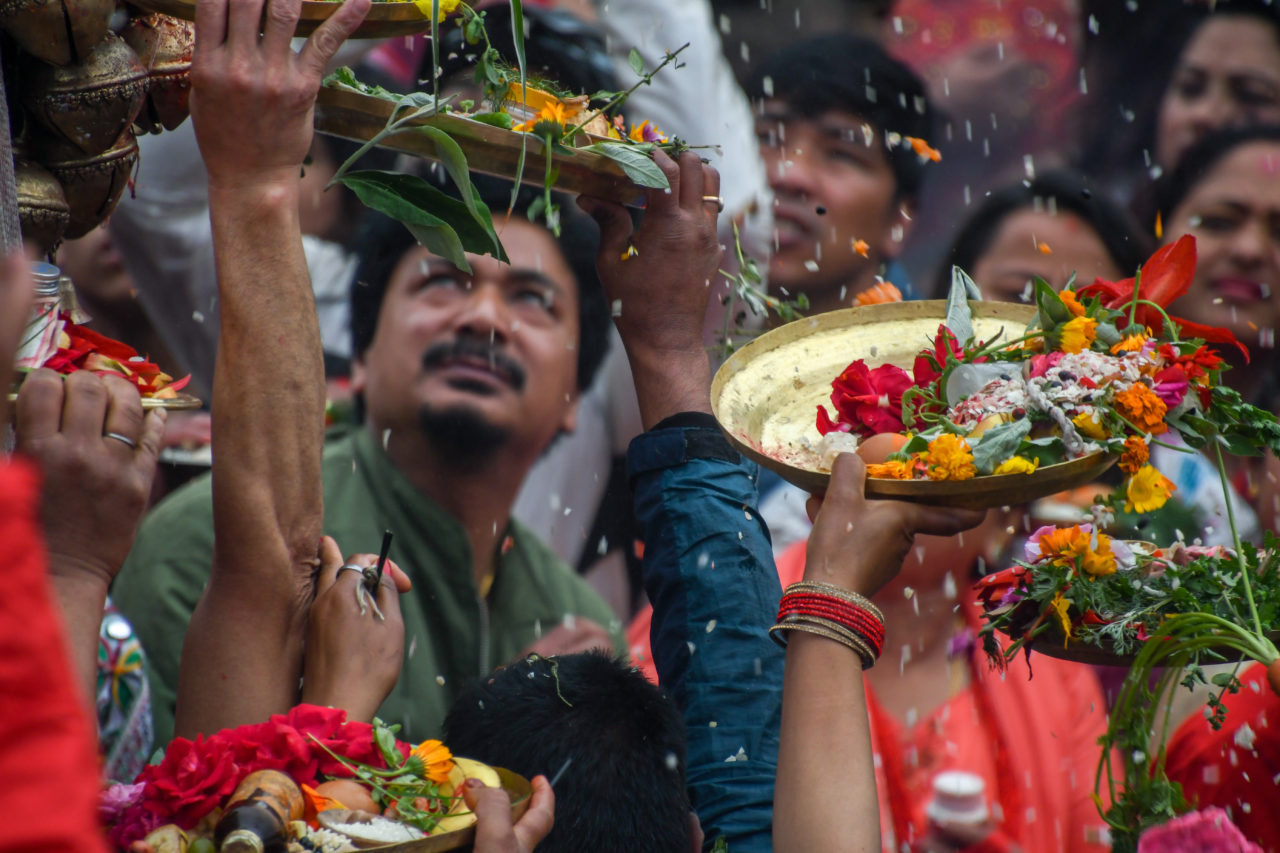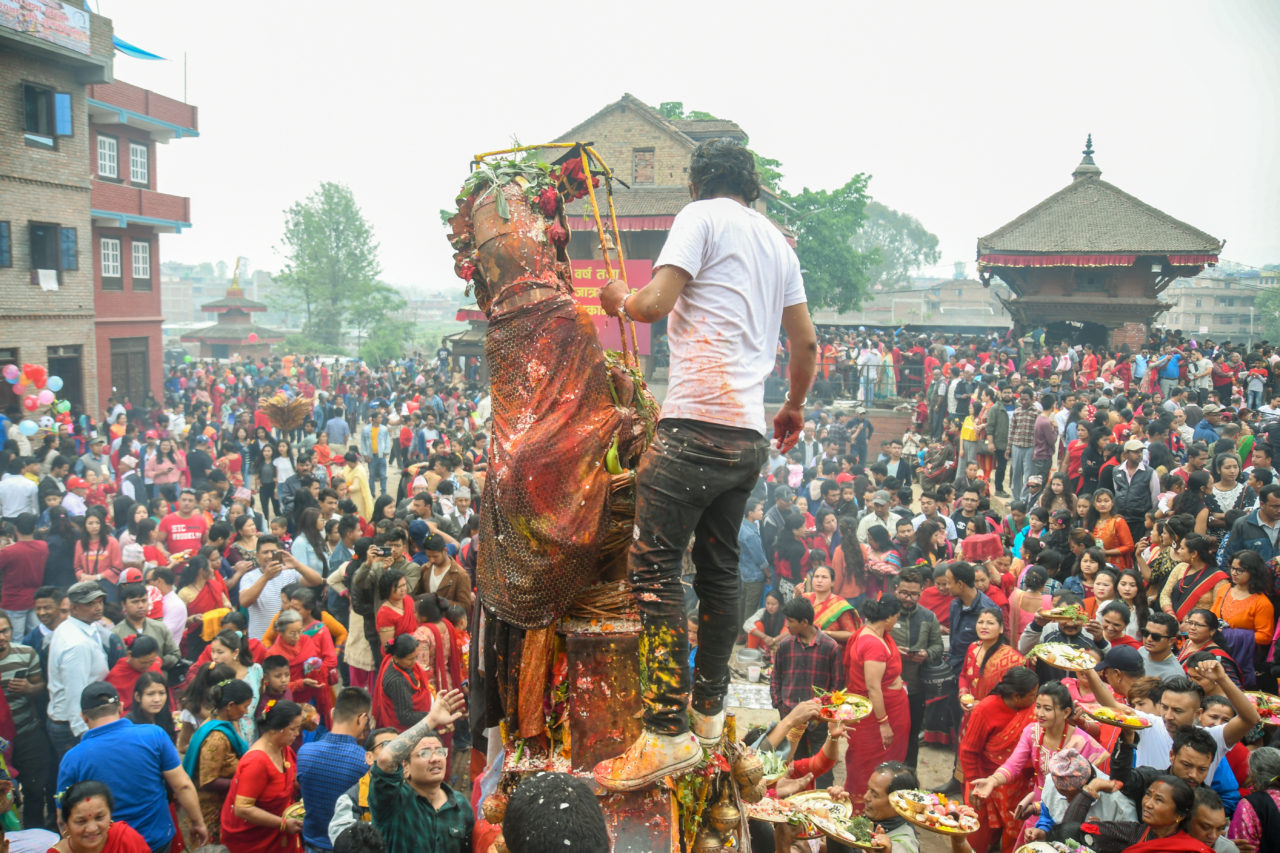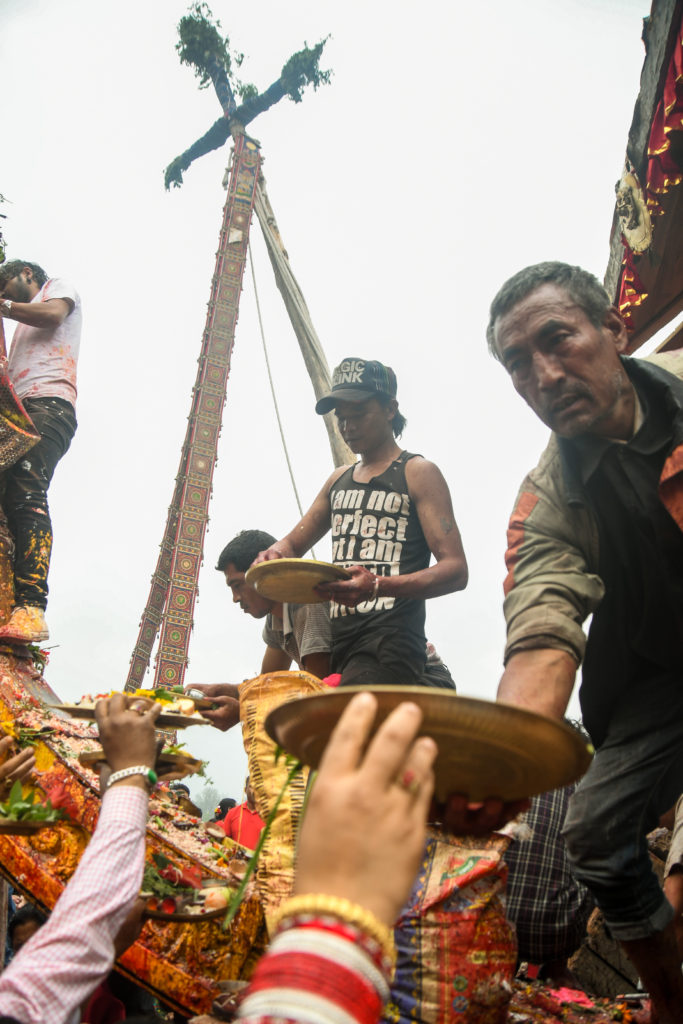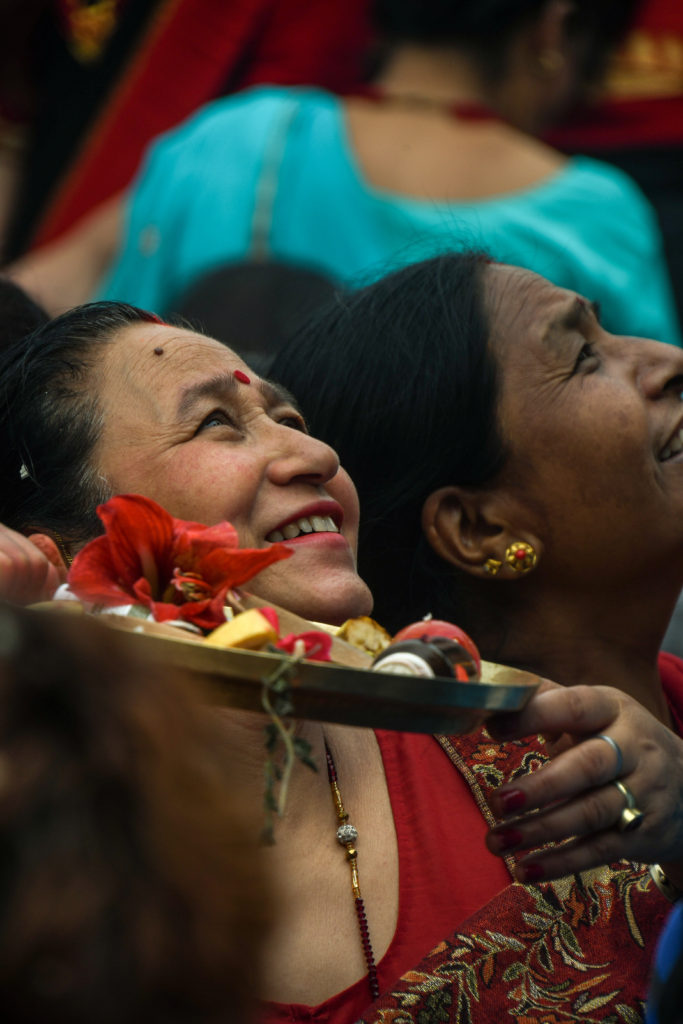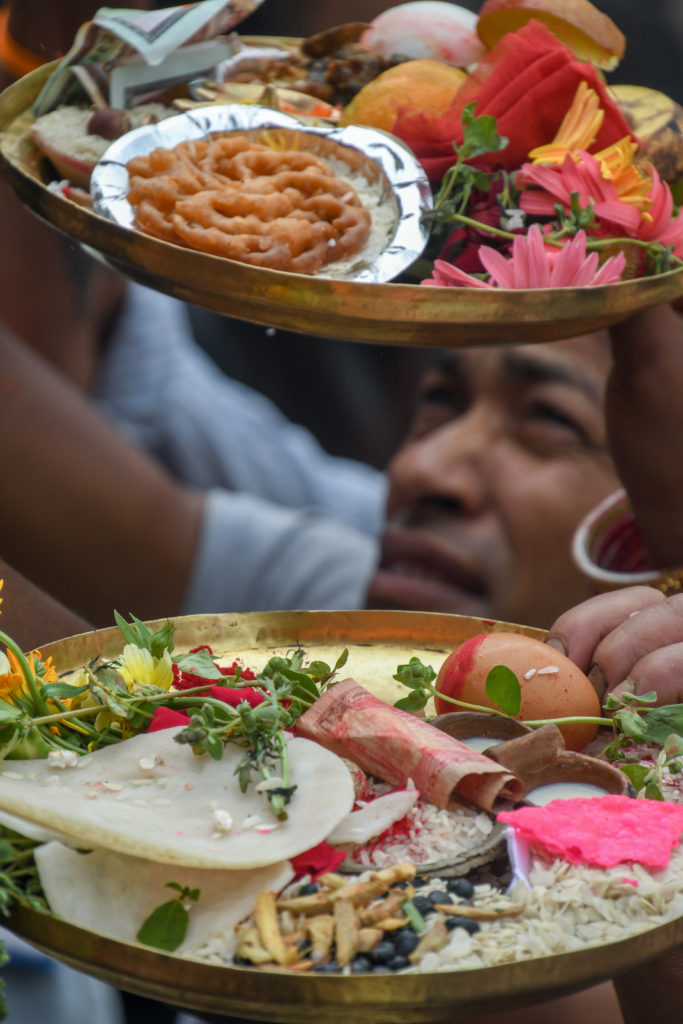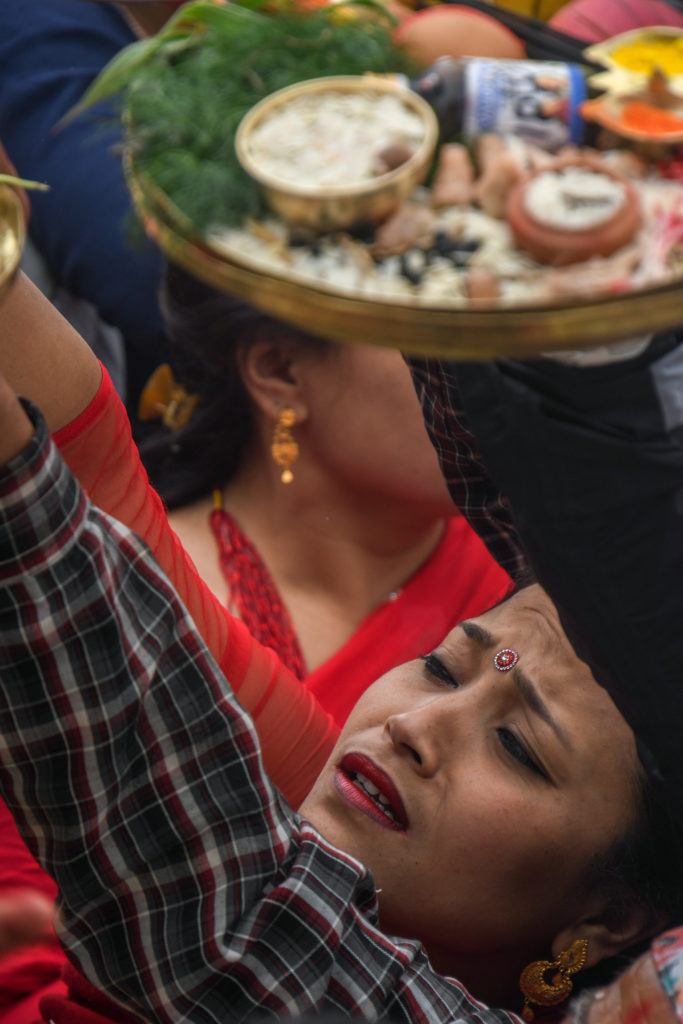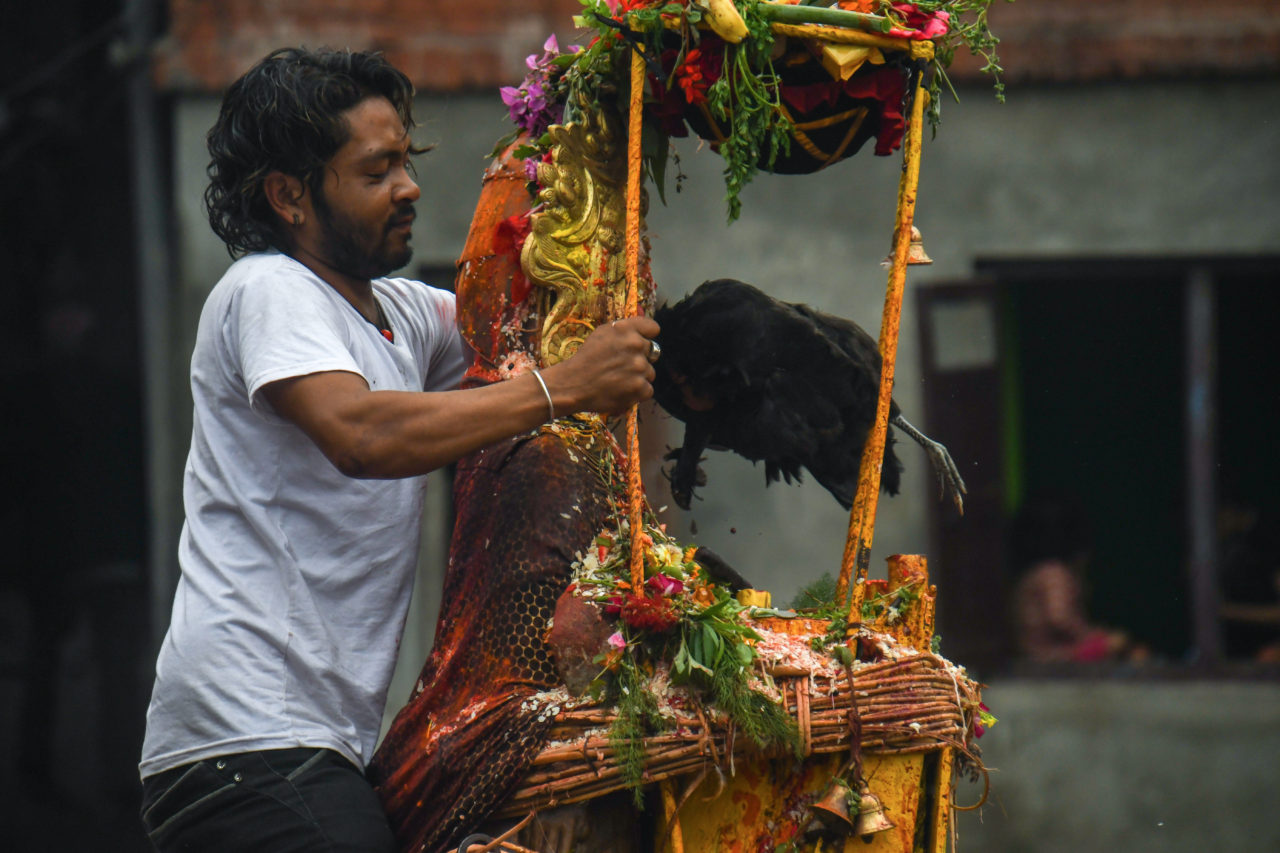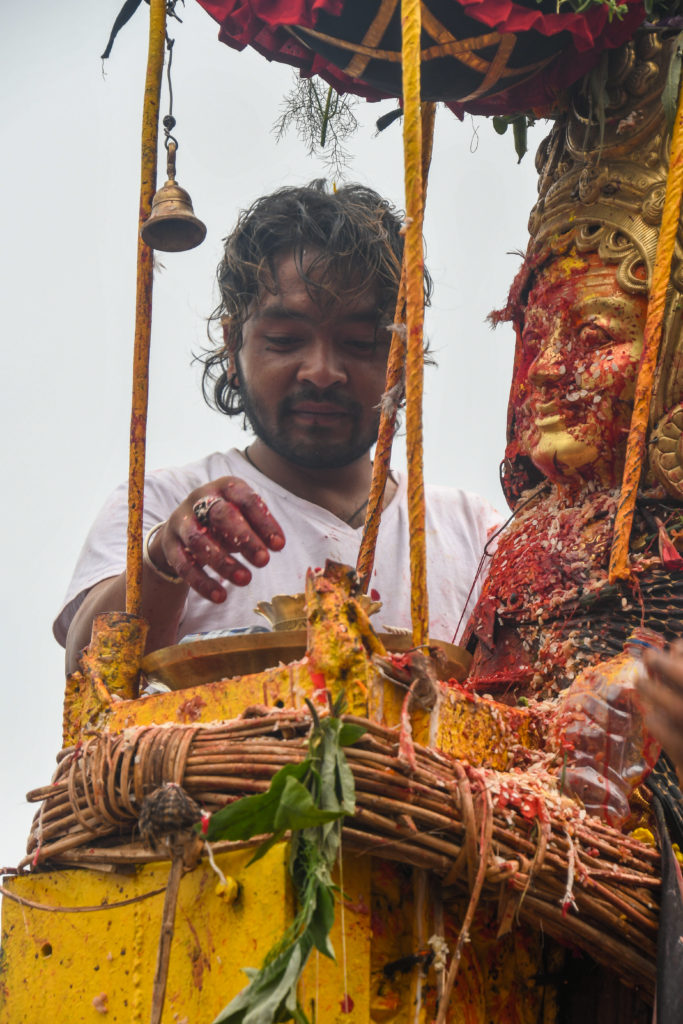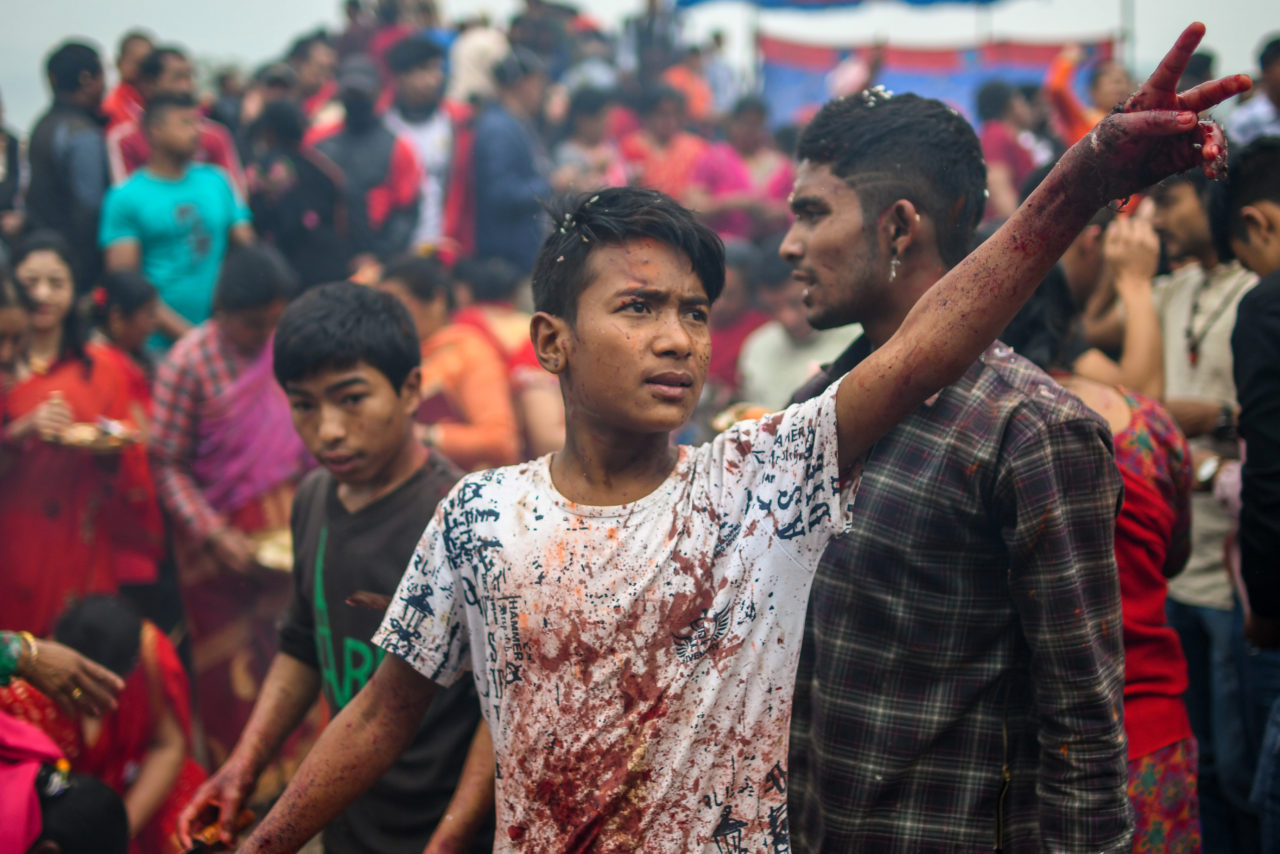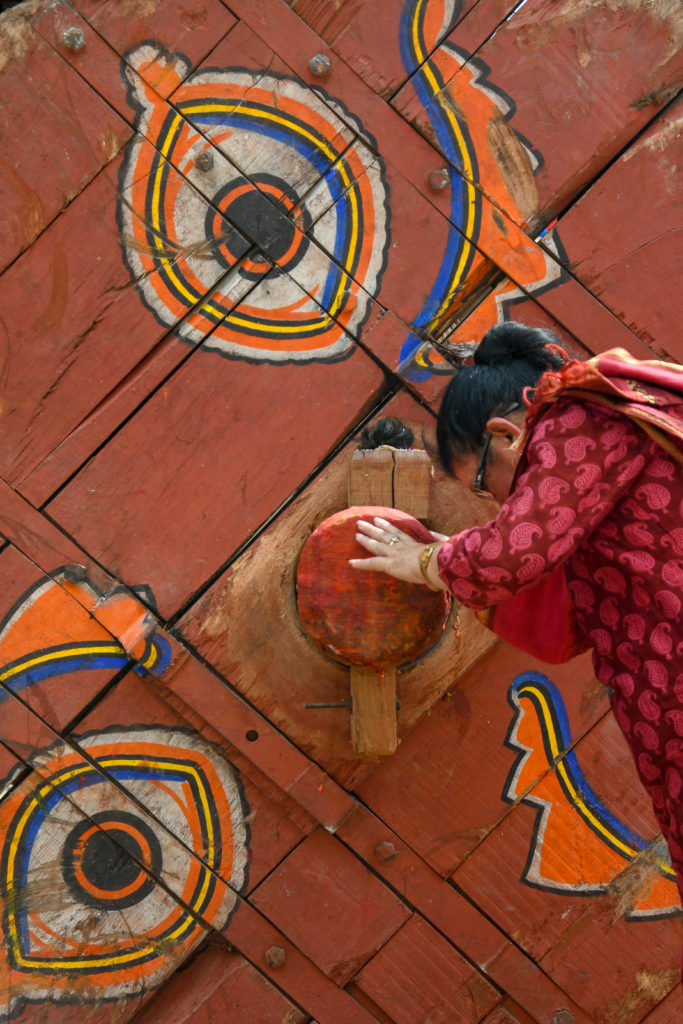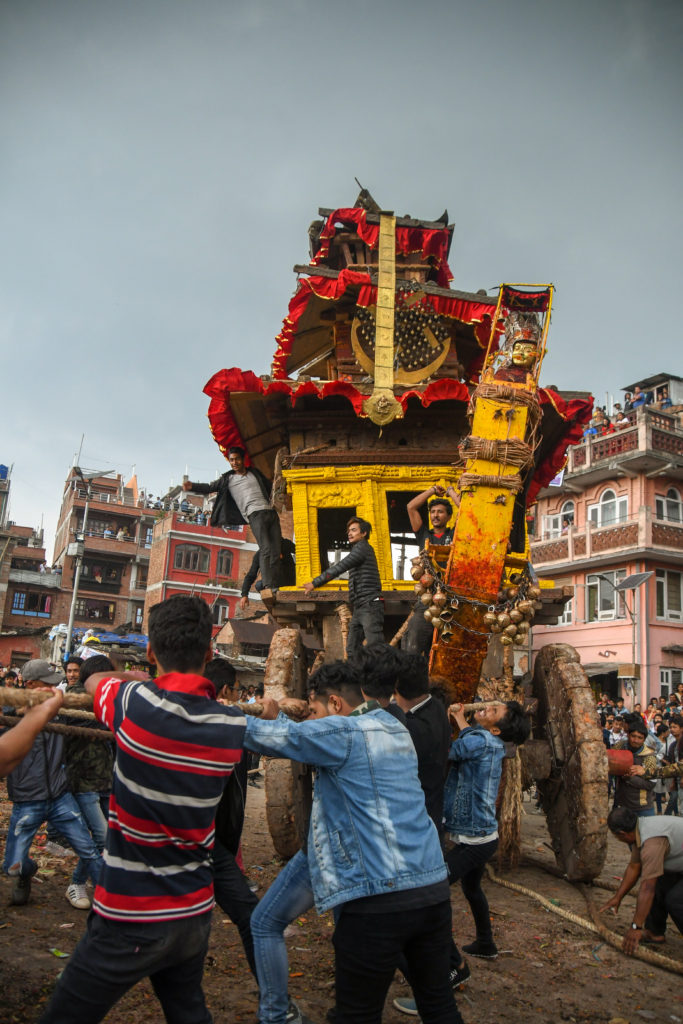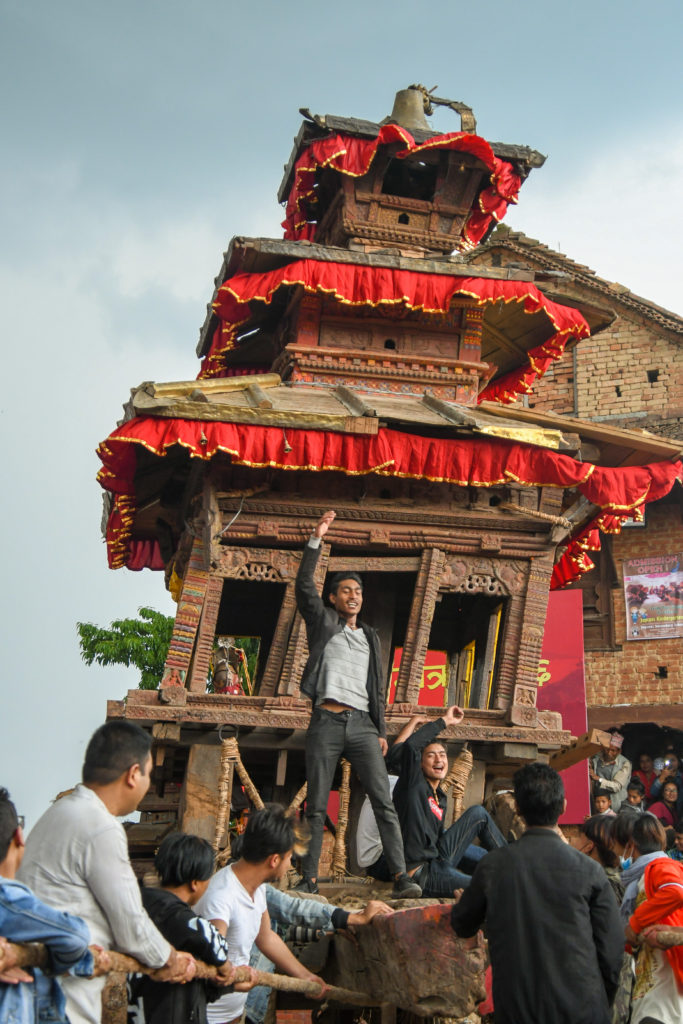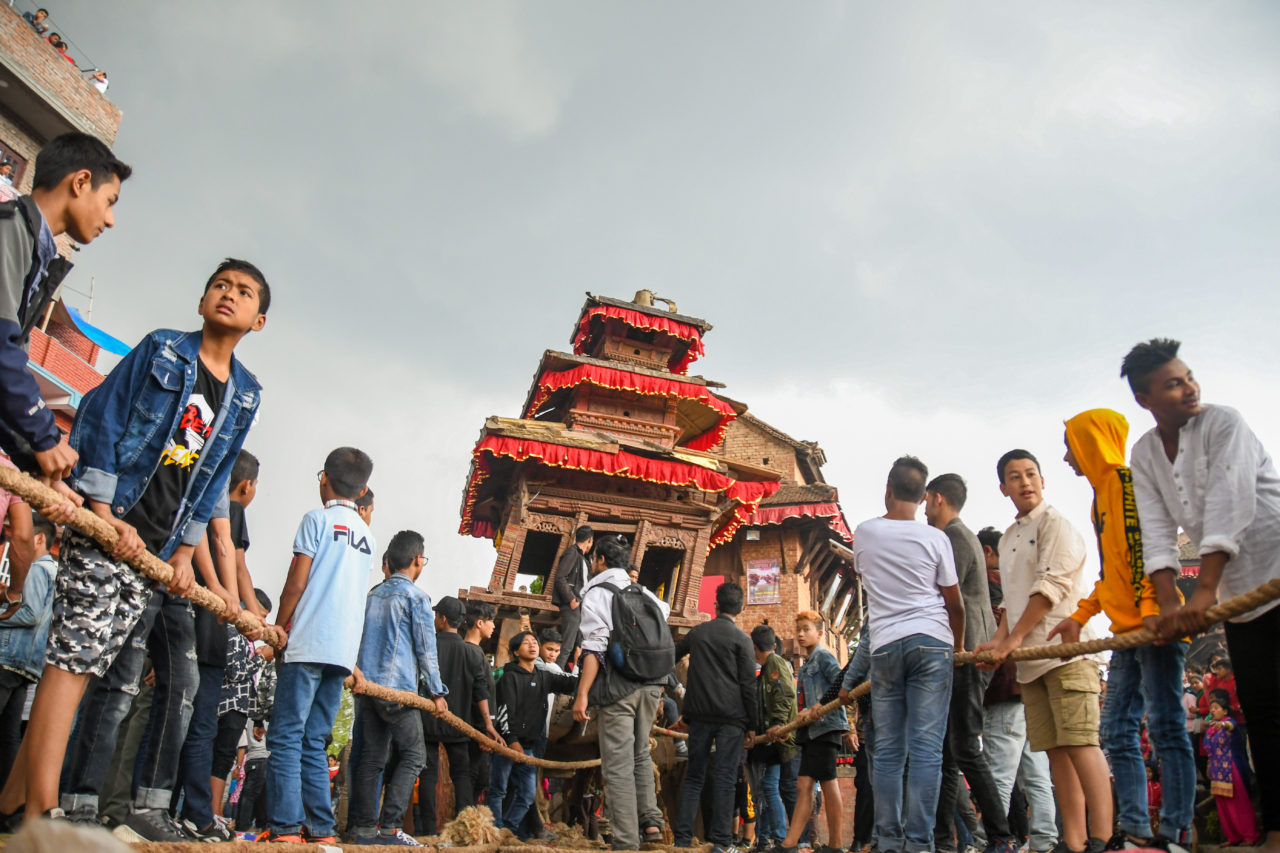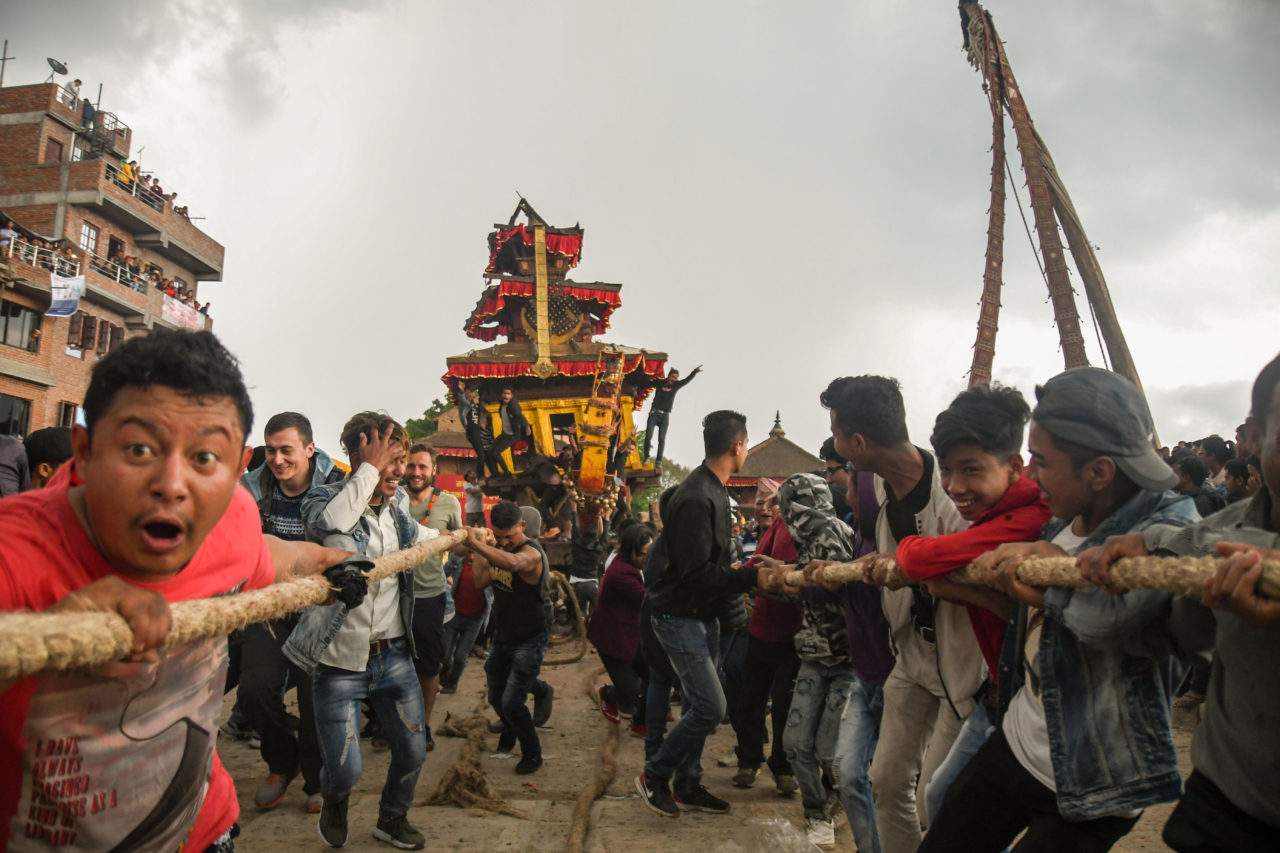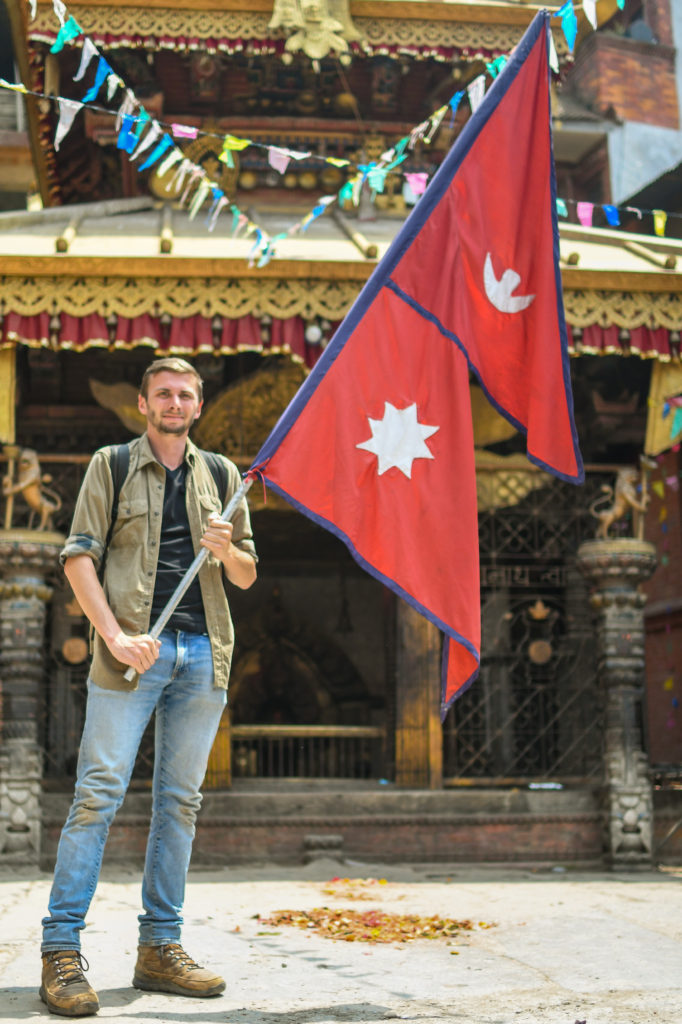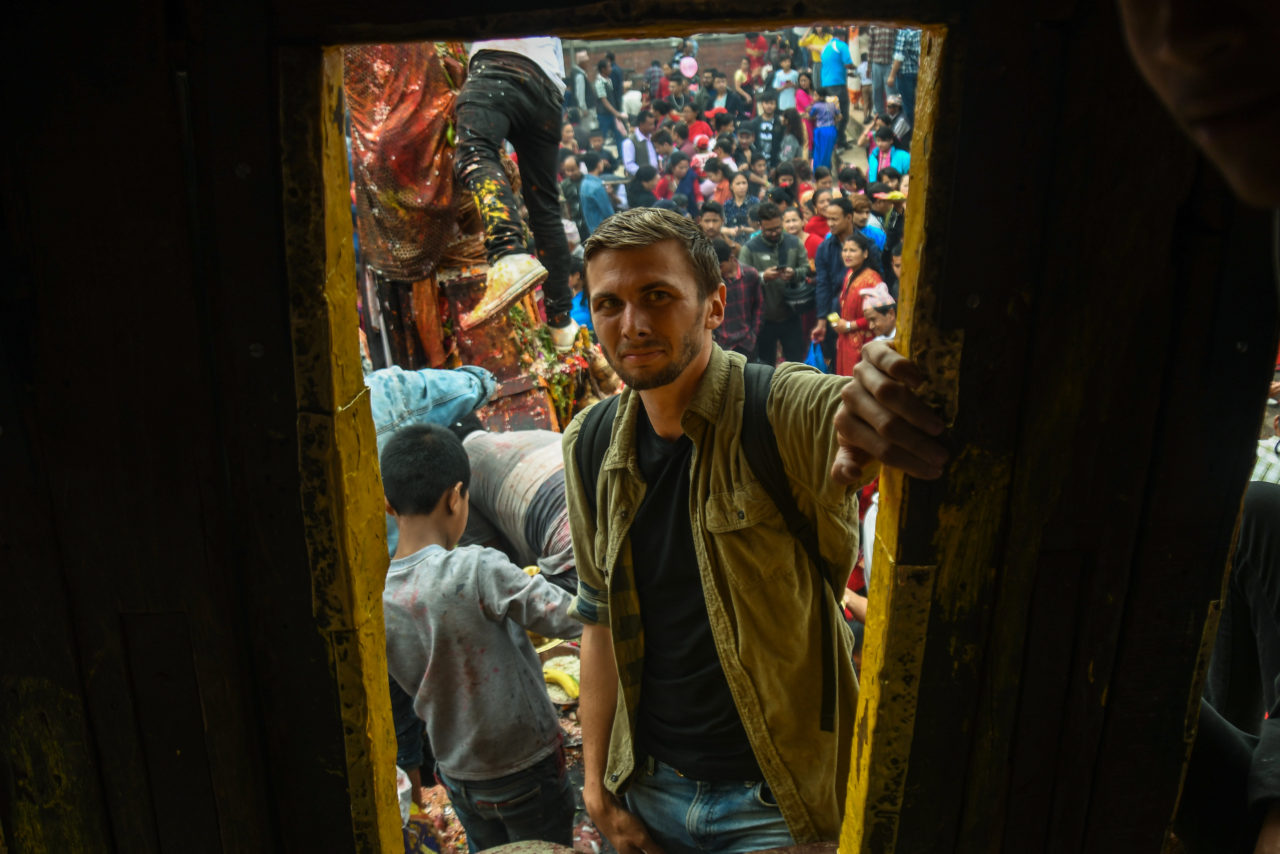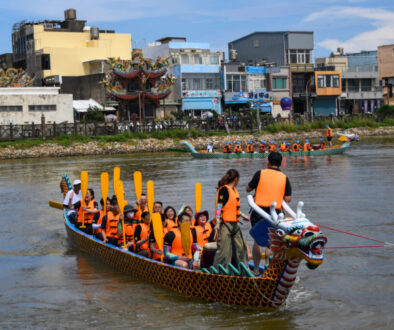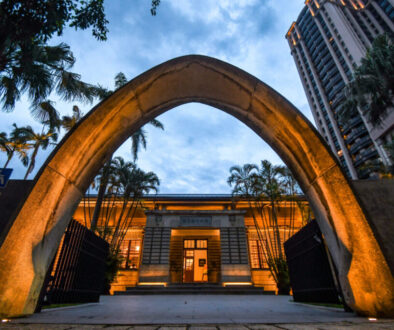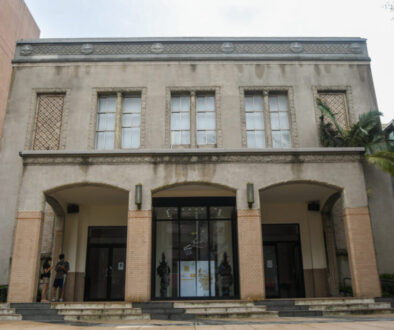Attending Bisket Jatra in Bhaktapur
Happy New Year (Naya Barsa)
A holiday such as Nepali New Years can’t quite hold a light to the likes of Tihar or Holi. Many families stay at home and simply bring in the new year over dinner. While most of the country has a quiet night in before the changing of the Nepali calendar, one city stands alone with their outlandish and colorful celebration.
Bhaktapur, or The City of Devotees, was once the capital of the Malla Kingdom. During the Malla Dynasty’s reign, Nawar culture flourished. With the support of the king, massive temples and palaces were erected throughout the city. These towering pagodas loom over the sprawling labyrinth of houses below. In the shadows of these temples, devotees and tourists alike have been captivated by Bhaktapur’s beauty for generations.
Although temples such as Nayatapola and Bhairavnath are constantly being frequented by Hindus burning incenses and ringing bells in prayer, they don’t quite come alive as they do during the Nepali New Year. These wooden and brick pagodas come to life with swarming masses of devotees playing music, placing offerings, and lighting candles to the gods for a prosperous new year.
Looking for more things to do in Nepal? Check out Namo Buddha!
The Newars
Among the 126 castes and ethnic groups of Nepal, the Newars have made the largest impact on the culture of the country. In most cases, if you see an elaborate parade being led down the streets or a decorative temple dominating a courtyard, odds are it is closely linked to the Newar people.
The creation of the new year festival known as “Bisket Jatra” started from nothing more than a king’s love of both Newar culture and fables. King Jagajyoti Malla was so enthralled by the ethnic group’s traditions that he decreed that every new year there should be a festival to embody Newar customs and immortalize some of his favorite fairy tales.
It is not only the pulling of a wheeled temple through the streets of Bhaktapur that mesmerizes onlookers. Every morning of this nine-day festival is started with various parades roaming the streets. The lines of musicians, all donning traditional Newar clothing and adorned with various beads and jewelry, beat drums and play flutes which are echoed throughout the city.
Other than the main temple of Nayatapola (the location where the chariot or rathas is constructed), the focal point of the Bisket Jatra is Yoshin Khel, nearby Bhadrakali Temple. It is here where musicians can be seen praising God through both their music and songs as they read out verses from The Purana, their holy book.
Although Bisket Jatra has no direct relation to the Nepali New Year, it does breathe life into an otherwise normal day for the people of Bhaktapur.
You can read more about the origins of the Bisket Jatra here or here or here!
Worshiping the Lungo
Other than the sea of people surrounding the chariot, the massive pinnacle which looms over Yoshin Khel is sure to catch your attention. From the top of this wooden pillar is two long strips of cloth which sways in the wind. The significance behind this pole and the two waving tapestries is directly related to the myth that inspired the Bisket Jatra in the first place.
The fairy tale which inspired King Jagajyoti Malla to create the Bisket Jatra starts with an unmarried princess. Every night after her wedding, her new husband would suddenly die. Eventually, all the young men in the kingdom were too scared to attempt to even court the young princess.
One day, despite the pleas of his family, a brave young man stepped forward to marry the princess. On his way to his wedding, the young man was stopped by an old woman who was the goddess Bhadrakaali in disguise. She advised the young man that on the night of his wedding to stay awake even after his bride fell asleep.
The young man did as the old woman said, and after the princess fell asleep two snakes emerged from her nostrils. The groom quickly unsheathed his knife and killed the two snakes, thus lifting the curse. From that day on the couple lived happily ever after.
The pole, or lungo, represents the long life of the young man who was brave enough to lift the curse from the princess. The two red cloths hanging from the top of the trunk symbolizes the two snakes that emerged from the princess’s nose. Hindu devotees can be seen at the base of the pole laying offerings and reaching out to grab the waving cloth as a form of prayer and good luck.
Looking for more festivals in Nepal? Check out the bi-monthly aarti puja in Panauti here!
Offerings to Bhairav
On the bow of the mobile temple is a golden face which beams across the thousands of people who daily place offerings before his feet. This god is no other than the ferocious Bhirav. This deity’s name literally translates to fearful. Rather than instilling fear into the hearts of man, this god actually exists to drive out anger, lust, and greed from his worshippers.
The reason this fearful god is worshipped during the Bisket Jatra is linked to yet another myth. Bhadrakali, the wife of Shiva, went missing and Bhirav was sent to look for her. It was said that the goddess was being worshiped in Bhaktapur. In order to blend in with the crowd, Bhairav took human form. Before long, however, his cover was blown due to his abnormal stature. Before the god was able to vanish, a few strands of his hair was caught by crazed worshippers who lunged at him.
Bhairav was furious and his wrath was felt by the people of Bhaktapur. In order to appease the god for their wrongdoings, a temple and chariot were erected in Bhairav’s honor.
During the early morning of each day of the 9-day Bisket Jatra, Hindu worshipers both from near and far clammer to get to the front of Bhairav’s chariot. Offerings in hand, the devotees extend their arms so that the ones collecting the offerings can place the rice, eggs, and other gifts in front of the bleeding face of Bhairav.
From the glimmering golden visage of the god to the very wheels of the chariot he is perched on, believers can be seen on their knees placing whatever offerings they have at the base of the temple in hopes that they will have a prosperous life. Grandmothers can be seen pushing and elbowing their way to the front of the mob to have her gifts brought before the fearful god.
Raining Blood
While offering such things such as eggs, rice, and fruit to a god may seem innocent enough, it is the animal sacrifice which might make some foreign tourists uneasy. From the dawn of time animals have been slaughtered in order to appease the gods. Up to now, many religions from Islam to Hinduism still maintain this practice.
During the Bisket Jatra, devotees can be seen clutching live chickens and bringing them before the golden, beaming face of Bhairav. The attendants who accept the offerings to the deity will then take the animal, slaughter it, rub the blood of the beast on the face of the statue, and return some of the meat back to the worshiper to be consumed.
Seeing the blood of the animals being splattered on the clothes of the worshippers may be unsettling for some tourists, but it is important to partake in events such as the Bisket Jatra with an open mind.
The Chariot
Bisket Jatra would not attract anywhere as many worshippers and tourists if it did not have the chariots. During this festival, there are two mobile temples which are erected near Nayataploa Temple. One for the god Bhairav and a smaller chariot for the goddess Bhadrakalli.
Each morning these temples can be found at Yoshin Khel, surrounded by waves of Hindus placing offerings, lighting candles, and even just resting their foreheads against the giant wheels of the chariot for good luck. While many of the older devotees look upon the great wheeled pagoda with a sense of respect and sacredness, children see it as nothing more than a colorful jungle-gym. Boys and girls can be seen climbing up the side of the chariot to run around in its interior.
As the day went on, the crowds around the rathas began to die down. Even though many of the devotees began to return home, this was only the calm before the storm.
Pulling the Rathas
Although you may have missed out on the massive tug of war or will not be in Bhaktapur to witness the last day of the Bisket Jatra which is marked with the two chariots smashing into each other, doesn’t mean you can’t partake in the temples being rolled through the streets!
After hours of waiting around, men slowly made their way to the rope of the rathas. At first, the line of people trying to pull the chariot was made up of only young boys. Eventually, others began to join in to attempt to move the massive wheeled temple. As several men stood on top of the chariot and screamed heave-ho repeatedly in Nepali, the crowd began to pull with all their might in front of hundreds of onlookers.
Getting the wheels to turn on this gigantic temple takes time. For the chariot to just make a 360-degree turn, it took a group of nearly a hundred men an hour. Despite having to wait around for the pagoda to finally get moving, the energy in the air is electric. The very second the wood starts creaking and the wheels begin to groan, the entire city of Bhaktapur vibrates with excitement.
Nowhere in Nepal or even South Asia has a holiday which is quite like Bisket Jatra. The music, dancing, colors, and festivities are all unique to Bhaktapur. While in Nepal, you may find yourself more on the hiking trails than in the cities, but to truly get in touch with the people and see their culture come to live, witnessing Bisket Jatra is a must.

